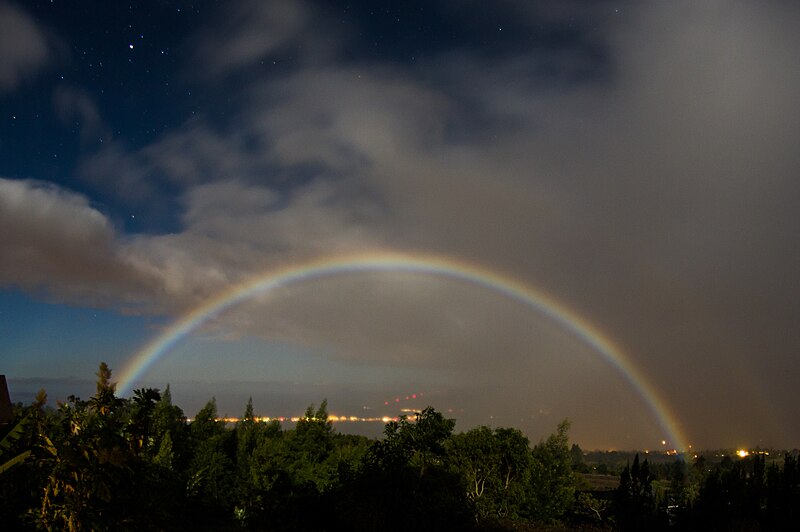When the moon is closer, it appears ever-so-slightly larger than normal. This makes some people roll their eyes at all the attention, but I think anything that gets people out to experience the night should be celebrated! With that in mind, here are four things you can do to celebrate tonight's moon (the first 3 are great for kids):
1) Watch the moonrise
When the moon is near the horizon, an optical illusion makes it look bigger than usual. This makes every moonrise special, but the experience is most exciting when the moon is big and full. One fun activity, especially for kids, is to bend over and look at the moon upside down through your legs. For many people, this destroys the illusion, so you can switch back and forth between having a big and small moon.
You can look up the moonrise time at your location here. For observers at high Northern latitudes where night is already falling, the moon will appear quite red, because the blue light is scattered by the atmosphere.
2) See how well you can see with only ~0.2 lux.
Once the moon has risen high in the sky a few hours later in the evening, go out into an area that's as free as possible from artificial light. A big (unlit) park or sports field will work in a city, and an open field works best in the country, but a back yard will do in a pinch. You'll probably find that you can see better than you can on a typical urban street, even though lit patches under streetlights are usually 100-500 times brighter than full moonlight. The reason for this is that the moon lights the landscape uniformly, and most importantly without glare. A recent paper argues that even older pedestrians need only 1 lux to avoid stumbling, and this experience shows to what extent we could reduce energy use and light pollution if we improved urban lighting to make it more uniform.
3) Test whether you can see color and read text under full moonlight
Before you head out the the park, grab a colorful magazine and take it with you. Many people can read text and see colors in full moonlight, but a lot of people incorrectly believe that the moon isn't bright enough. Who in your family can read the easiest? Can you tell what all colors are, or just some of them? Speaking of colors, use something to block out the moon and look at the sky around it. Many people experience the sky as shining blue near the moon.
4) Take moonlit landscape photos
If you have a camera with a programmable shutter speed, you can take absolutely wild photos by moonlight. All you need is a tripod or stable surface to rest your camera on (here's a moon landscape photography tutorial in case you want to get really serious). Once the moon is high up in the sky, take a photo of the landscape, and you'll end up with a fully lit scene, but with stars shining in the blue sky!
An example of one of my favorite moonlit photos is below (although this was far from full moon, and the exposure was kept short because the moon was in the photo, so the sky doesn't appear blue):
 |
| Moonrise over Nationalpark Müritz by Alejandro Sánchez de Miguel is licensed under the Creative Commons Attribution 3.0 Unported License. |
If it's cloudy or raining where you are, you could try for two other phenomena. One of the hardest things there is to photograph is a moonbow: a rainbow lit by moonlight:
 |
| Moonbow, Kula, Hawaii by Arne-kaiser is licensed under the Creative Commons Attribution-Share Alike 4.0 International license. |
Finally, if it's overcast where you are, I'm still waiting for someone to answer my challenge of taking a landscape photo on an overcast night in an area without significant light pollution. Maybe tonight will be the night!
No comments:
Post a Comment